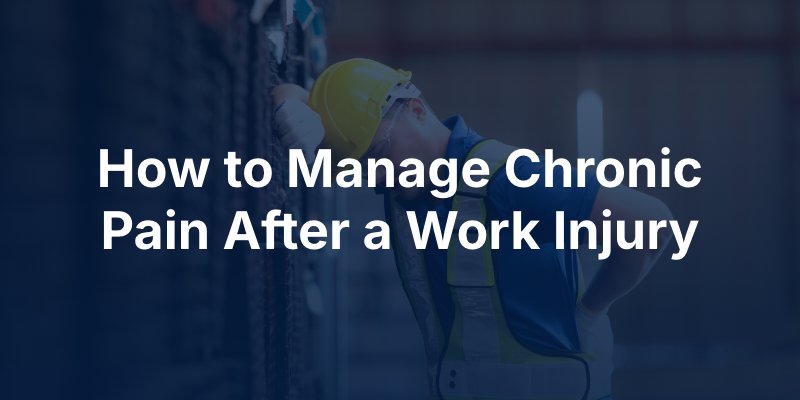Managing Chronic Pain from Workplace Injuries
Request Free ConsultationWorkplace injuries are on the rise, with 2.8 million workplace injuries, and 5,586 fatalities reported by employers in 2022, the most recent finalized data year. This was an increase of 7.5% over 2021. Workplace injuries include those from sudden trauma like falls, heavy equipment injuries, and other accidents, and some result from repetitive motion and exposure to dangerous chemicals. No matter how a workplace injury occurs, many injuries have long-term or life-long implications, including chronic pain.
Read here to learn more statistics on U.S. workplace injuries.
What Are the Most Common Causes of Workplace Injuries?
Some industries have a much higher risk of workplace injuries than others. For instance, agriculture and construction industries have the highest numbers of work-related injuries each year. However, an injury can occur in any workplace, including in hospitals, schools, and offices. The most common causes of workplace accidents include falls, heavy equipment injuries, struck-by accidents, chemical exposures, electrocution, explosions, and repetitive motion injuries.
Employers, managers, and supervisors have a legal responsibility to follow guidelines for safety protocols, training, and procedures under the Occupational Safety and Health Administration (OSHA), but sometimes negligence occurs in the workplace, increasing the risk of an injury.
However, when negligence occurs in the workplace, increasing the risk of an injury, consulting with a St. Louis workers’ compensation attorney helps you understand your rights and explore your legal options.
What Types of Workplace Injuries Cause Chronic Pain?
The most common work-related injuries are strains, sprains, torn ligaments, fractures, and repetitive motion injuries. Workplace injuries that can result in chronic pain include back injuries, neck injuries, shoulder injuries, knee injuries, wrist injuries, ankle injuries, and traumatic amputations. Burns and electrocutions may also cause chronic pain.
When the victim of a workplace injury suffers ongoing pain, they often face additional complications that come with prolonged pain.
What Are the Consequences of Chronic Pain?
Medical providers describe chronic pain as pain that continues for 12 or more weeks. Pain is always an unpleasant experience, but when it doesn’t abate but continues indefinitely, chronic pain begins to have other negative consequences on the individual’s life. Common physical and emotional complications of chronic pain include the following:
- Depression
- Anxiety
- Sleep disturbances
- Social avoidance/isolation
- Changes in heart rate and blood pressure
- Feelings of helplessness, frustration, and irritability
- Overmedication/substance abuse
Unfortunately, the emotional distress associated with chronic pain can worsen the pain symptoms, which then further exacerbates the emotional distress in a chronic cycle. This is why learning to manage chronic pain is critical to those with workplace injuries.

How to Manage Chronic Pain After a Workplace Injury
There are many resources available to help injury victims learn to cope with chronic pain and manage symptoms in a positive manner. Some examples include:
- Using non-steroidal anti-inflammatory Drugs (NSAIDs)
- Using hot and cold therapy
- Undergoing physical therapy
- Trying therapeutic massage
- Practicing mindful meditation methods
- Practicing yoga
- Using controlled breathing and relaxing music
- Improving diet and exercise plans under a doctor’s advice
- Avoiding alcohol
- Attending a pain clinic to learn coping strategies and holistic aids
- Learning pacing and realistic goal-setting
Having a good support system through family, friends, and professionals in a pain management team helps to manage chronic pain and its impacts on mental health.

